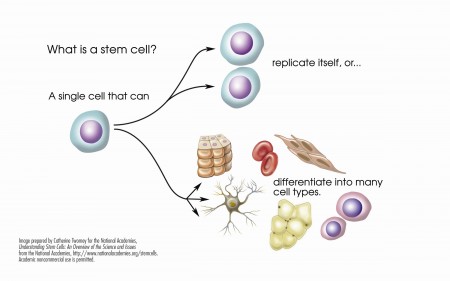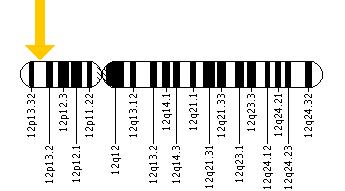DRAMATIC PROPHYLACTIC RESPONSE TO NIMODIPINE: A Case Report
(This is an invited contribution by Robert Westhead.)
This 50 year old man had a lifetime of incapacitating rapid cycling (10 days up and 10 days down) bipolar I disorder, but then for the past 4 years has had a complete remission on nimodipine (60mg QID). He remains on lithium (800mg), and of his other long-term medications, he has titrated quetiapine down from 800mg to 50mg and has discontinued phenelzine.
He had previously failed to respond to combinations of:
· Lithium
· Anticonvulsant mood stabilizers (including divalproex sodium, lamotrigine, carbamazepine and pregablin)
· Atypical antipsychotics (including quetiapine, aripiprazole and lurasidone)
· Antidepressants (including SSRIs eg citalopram and sertraline, NSRIs eg venlaflaxine and mirtazapine, and a MAOI eg phenelzine)
· Thyroxine
· Propranolol
· Clonazepam
He wanted to highlight this dramatic response to nimodipine in combination with lithium as this dihydropyridine calcium channel blocker is not well known or frequently used for its prophylactic effectiveness.
He noted that as well as stopping the rapid cycling, the nimodipine has provided complete relief from comorbid social anxiety symptoms and remediated cognitive and memory impairment.
This response to nimodipine potentially also has pathophysiological implications. Nimodipine directly blocks the CACNA1C calcium influx gene that has repeatedly been associated with vulnerability to depression, bipolar disorder, and schizophrenia in gene wide association studies. This patient does not know whether he carries this gene variant, but assays for it are routinely available as performed by the company Genomind.
Thus, it remains an open question as to whether those who have the CACNA1C variant would be more responsive to nimodipine compared to those without the variant. Certainly, the efficacy of this agent in treatment of patients with bipolar disorder deserves further consideration and study.
Nimodipine Decreases Frontal and Parietal Cortical Activity During Working Memory in Healthy Subjects
At a recent scientific meeting, researcher Kristin Bigos and colleagues described the effects of nimodipine, a treatment for brain hemorrhage, on the brain during working memory tasks. Nimodipine is a dihydropyridine L-type calcium channel blocker. Calcium channel blockers prevent calcium from entering cells in the heart and blood vessel walls, and they are often used to treat high blood pressure.
Nimodipine acts on the CACNA1C calcium influx gene. Certain genetic variations in this gene (particularly the rs1006737 A allele) have been linked to vulnerability to bipolar disorder, schizophrenia, depression, and autism. Carriers of the risk allele also have higher CACNA1C mRNA expression in the dorsolateral prefrontal cortex and exhibit more activity in the frontal and parietal regions of the brain during working memory tasks, suggesting inefficient brain processing in these regions. Bigos and colleagues found that 60mg/day of nimodipine decreased frontal and parietal cortical activity by 39.1% and 42.8%, respectively, during a working memory task, suggesting that nimodipine improved the efficiency of memory processing. Nimodipine’s positive effects were greater in those participants who had the CACNA1C risk allele.
Editor’s Note: Using a placebo-controlled off-on-off-on study design (meaning patients took placebo for a period, then nimodipine, then placebo again and nimodipine again), this editor (Robert M. Post), Peggy J. Pazzaglia and colleagues found that nimodipine had positive effects in both mania and depression in patients with bipolar disorder (described in the 2008 book Treatment of Bipolar Disorder: A Casebook for Clinicians and Patients by Robert M. Post and Gabriele S. Leverich). In a large randomized study of patients with bipolar disorder presented by Haroon R. Chaudhry at the 2010 meeting of the Society of Biological Psychiatry, lithium was associated with about a 50% response rate while the combination of lithium and nimodipine was associated with a 73% response rate.
It remains to be seen whether people with bipolar disorder who have the CACNA1C risk gene would respond better to nimodipine than those without the risk gene, and whether it would improve working memory more in the subgroup with the risk gene.
Stem Cell Research May Help Explain Biochemistry of Bipolar Disorder
At the 2015 meeting of the International Society for Bipolar Disorders, researcher Martin McInnis described how stem cells can be used to identify biochemical abnormalities in patients with bipolar disorder. In this research, the stem cells, or IPSCs (for induced pluripotential stem cells), are created when cells from skin fibroblasts, which produce connective tissue, are treated with chemicals that cause them to de-differentiate back into stem cells.
McInnis identified several abnormalities in the stem cells of patients with bipolar disorder. Stem cells with the gene CACNA1C, which is associated with vulnerability to bipolar disorder, fired more rapidly than non-CACNA1C stem cells. There were other abnormalities at the NMDA glutamate receptor and an imbalance of the neurotransmitter GABA in the cells. When the cells were treated with lithium, some of these abnormalities were reversed. In the cells with the CACNA1C gene, lithium normalized the firing rate. Lithium aslo re-balanced the distribution of GABA in the cells.
McInnis hopes that this stem cell research will shed light on the abnormalities associated with bipolar disorder, help explain how lithium corrects some of these, and lead to the development of new therapeutic approaches.
Gene CACNA1C is Associated with Early-Onset Bipolar Disorder
Several genes have previously been implicated in bipolar illness. In a recent study, researchers at the Mayo Clinic, led by Paul Croarkin, compared variations in three genes (CACNA1C, ANK3, and ODZN) across 69 children aged 6–15 with mania, a 776-person control group from the Mayo Biobank database, and 732 adults with bipolar disorder (some with onset in childhood and adolescence and some with onset in adulthood, also from the Biobank). All participants were Caucasian, to minimize confounding by population stratification. The researchers found that the minor allele of rs10848632 in CACNA1C was associated with childhood onset of bipolar disorder. The haplotype (or sequence of nucleotides) T-G-G-T was the one associated with risk. Genetic risk scores were also associated with early onset of illness.
Editor’s Note: In research by Michael McCarthy and colleagues, CACNA1C has been linked to abnormal circadian rhythms in bipolar disorder and to responsiveness to lithium treatment. Together, these data suggest the importance of studying the calcium channel blocker nimodipine (which blocks calcium influx through CACNA1C) in childhood-onset bipolar disorder. A 1999 case report by Pablo A. Davanzo and colleagues described a teenager with ultra rapid cycling bipolar disorder (multiple mood switches/day) that did not respond to a host of conventional medications, who improved dramatically on nimodipine, reaching remission. This author (Robert M. Post) has also seen confirmed responsivity in adults with rapid cycling bipolar disorder (reported in the 2008 book Treatment of Bipolar Illness: A Casebook for Clinicians and Patients, by Post and Gabriele S. Leverich).
Calcium Channel May Be Responsible for Circadian Rhythm Abnormalities in Bipolar Disorder
Genetic variation in L-type calcium channel genes have been linked to bipolar disorder. Since calcium plays an important role in circadian rhythms, abnormalities in the calcium channel in bipolar disorder could explain some of the circadian rhythm disturbances patients with bipolar disorder exhibit. New research by Michael McCarthy and colleagues shows that calcium channels in general, and the gene CACNA1C in particular, affect signaling pathways that regulate circadian rhythms in both human and animal cells. The researchers also found that calcium channels affected how lithium changes circadian rhythms, suggesting a mechanism by which the treatment may work. They suggest that drugs that affect the L-type calcium channel may be promising treatments for bipolar disorder.
Editor’s Note: The L-type calcium channel blocker nimodipine has had antidepressant, antimanic, and anticycling effects in some patients with bipolar disorder in small studies both by Peggy Pazzaglia and colleagues (including this author Robert Post) and a larger randomized study by Haroon R. Chaudhry.
The clinical effects of nimodipine results thus align with studies linking the CACNA1C gene to bipolar illness and its early onset, increased expression of the gene in the brain of bipolar patients in autopsy studies, increased levels of calcium in white cells of bipolar patients, and a variety of other neurobiological phenomena observed in normal controls carrying the risk gene.
The new link found between CACNA1C and circadian rhythms further links the L-type calcium channel abnormality and bipolar disorder, as well as the therapeutic effects of the L-type calcium channel blocker nimodipine. This drug deserves further study, especially in those with the genetic variation in CACNA1C that has been linked to bipolar disorder.
Gene for Calcium Channel Linked to Bipolar Disorder in Several Ways
No one gene explains the risk of developing bipolar disorder. Many genes are involved, each with a small effect. However, the effects of one particular gene have been validated in multiple different ways. The gene is called CACNA1C, and it codes for one subunit of the dihydropyridine L-type calcium channel. Calcium channels are structures on the membranes of neurons that allow calcium to enter cells and alter their excitability.
Different people can have different variants of the CACNA1C gene, depending on which nucleotides appear there: valine (Val) or methionine (Met). One particular variant (known as the Met/Met single nucleotide polymorphism, rs1006737) has been associated with executive function deficits compared to the Val/Val variant in multiple tests in patients with bipolar disorder. Executive function refers to abilities like planning, organizing, and retaining information. This was reported by Soeiro-de-Souza et al. in the journal Acta Psychiatrica Scandinavica in 2013.
Importantly, CACNA1C has also been linked to risk of bipolar disorder, a finding that was replicated in several large genome-wide association studies (GWAS). Autopsy studies of people who had been diagnosed with bipolar disorder show more calcium channels in their brains. The Met/Met variant of the CACNA1C gene also lets more calcium ions into cells. Those who have the gene variant also show differences in some brain structures known to be involved in the modulation of emotions compared to those without the variant.
In addition to these findings, more than a dozen studies report increased intracellular calcium in the white blood cells of people with bipolar disorder compared to controls. To the extent that these increases in intracellular calcium reflect changes in neurons, this would be consistent with the findings about CACNA1C. High levels of calcium influx and the associated intracellular calcium may increase cellular excitability and potentially dysregulate normal neuronal functioning.
The final piece of evidence linking altered calcium channel regulation to bipolar disorder is a direct therapeutic test of a drug that blocks calcium influx through the dihydropyridine L-type calcium channel. There is evidence that nimodipine, which selectively blocks dihydropyridine L-type calcium channels, has therapeutic effects in bipolar disorder.
Genetic Risk Factors for Onset of Bipolar Disorder
A Genetic Risk Factor For Bipolar Disorder: The CACNA1C Gene
In an abstract presented at the 5th Biennial Conference of the International Society for Bipolar Disorders, Sophia Frangou reported on the CACNA1C polymorphism, a genetic variation that has been associated with the risk of developing bipolar disorder in several genome-wide association studies that search for links between genes and illnesses. Frangou found that those people with the genetic variation had increased volume in some parts of the brain, including the right hypothalamus and the right amygdala, and decreased volume in others, including the putamen, as well as alterations in the functional connectivity of different cortical areas.
These data may be related to findings that calcium influx may play a role in bipolar disorder. In people with the genetic variation, the risk allele binds to a subunit of the voltage-dependent calcium channel, which modulates the influx of calcium from the outside to the inside the neuron.
Increased amounts of calcium are consistently found in the white cells and platelets of patients with bipolar disorder compared to controls. Moreover, the drug nimodipine, a dihydropyridine L-type calcium channel blocker, is effective in the prevention of manic and depressive episodes in a subgroup of patients, particularly those with cycling patterns that are ultra-rapid (4+ episodes per month) or ultradian (including a mood switch within a 24-hour period 4+ times per month). A large randomized study of patients with bipolar disorder presented by H.R. Chaudhry at the 2010 meeting of the Society of Biological Psychiatry also found that while lithium was associated with a 50% response rate, the combination of lithium and nimodipine was associated with a 73% response rate, again suggesting the additional efficacy of blocking L-type calcium channels.
Immune Abnormalities May Predict Onset of Bipolar Disorder in Children at High Risk
At the 5th Biennial Conference of the International Society for Bipolar Disorders E. Mesman discussed connections between immunity and bipolar disorder. Mesman and colleagues followed offspring of parents with confirmed bipolar disorder for 12 years and compared them to children in the general population. In the children of bipolar parents they found higher levels of immune markers called cytokines (PTX3 and sCD25) in circulating monocytes, a type of white blood cell. In the children of bipolar parents they also found a high inflammatory setpoint in the monocytes. T-effector and T-regulatory cells were also different in the offspring of bipolar parents.
While these findings were present in children who had already become ill with bipolar disorder, they were also present in those who had yet to experience a mood disorder, suggesting that these immune and inflammatory markers may ultimately be an important risk marker for the onset of bipolar disorder.
Editor’s Note: These are among the first studies suggesting that immune and inflammatory abnormalities may precede the onset of bipolar disorder. Many studies have shown that patients with active bipolar disorder show more inflammation, including increases in inflammatory markers interleukin 1 (IL-1), interleukin 6 (IL-6), C reactive protein (CRP), and tumor necrosis factor alpha (TNFa). The new data are of considerable importance not only because inflammation could serve as a marker of illness onset, but also because inflammation could become a potential target for therapeutics (i.e. using anti-inflammatory and immune-suppressing agents to treat bipolar disorder).






